A Minimum Viable Product (MVP) can save you time, effort, and money in design and development costs by letting you test the market before building the actual product, then key features incrementally based on user feedback. This post will inspire you and guide you by highlighting 10 examples of MVPs for famous companies and products in their early stages.
Many great products began as humble MVPs: Uber, Facebook, Airbnb, Amazon, and countless others. To validate their business ideas and shape their software products around user needs rather than their own whims, these entrepreneurs built powerful companies that are household names today.
In this post, we’ll explore 10 Minimum Viable Product examples that offer valuable lessons about MVP strategy. We’ll also explore different types of MVPs so you can choose the right approach for your business.
What is A Minimum Viable Product?
A Minimum Viable Product (MVP) is a stripped-down version of a product that offers basic functionality, designed to help entrepreneurs validate a product idea and gather feedback from their target audience that will guide them in creating a full-fledged product.
“A Minimum Viable Product is that version of a new product that allows a team to collect the maximum amount of validated learning about customers with the least effort.” — Eric Ries, Author of The Lean Startup
A few examples of MVPs are:
- A bare-minimum version of an online food ordering app that only lets you select and order dishes from restaurants.
- An MVP of a web browser that fetches and parses a webpage. You’d also need “back” and “forward” buttons for navigation and a URL bar for entering web addresses.
- A basic version of a video game where you can only shoot zombies. Features like score and leaderboard can be added later.
These MVPs are not polished or mature, as their purpose is only to prove a concept or test the market response.
Companies outside of tech also make MVPs. A fast-food company launching the trials for a new sandwich is an example. However, they only release their MVPs to a narrow audience.
By contrast, software MVPs can be made available to anyone with an internet connection, should the founders opt for a broad release. That said, it isn’t always ideal to do a broad release, as you’ll see in our examples from Uber and Facebook’s MVPs.
What Are the Different Types of MVPs?
Broadly, we can categorize MVPs into two types: Low-fidelity MVPs and High-fidelity MVPs.
- Low-fidelity MVP: A low-fidelity MVP isn’t a working model. Low-fidelity MVPs use things like websites, advertisements, and explainer videos to describe a product concept before anyone has built it. That way, teams can validate demand for the product, gauge interest in different features, and assess what people are willing to pay.
- High-fidelity MVP: A high-fidelity MVP usually focuses on a small set of core features that solve a key problem for the target audience. It is functional, although the solution may be manual rather than automated, with people working behind the scenes to fulfill the product’s core functionality.
Here are six popular MVP models you can employ.
Low-fidelity MVPs
- Landing Page MVP: The landing page MVP is just a landing page, not a full MVP product. It allows companies to validate an idea and build an email list of potential users.
- Marketing Campaign MVP: The marketing campaign MVP involves communicating across many marketing channels to create buzz around a new product or business idea, allowing teams to attract early adopters and assess interest before starting development
- Explainer Video MVP: An explainer video MVP explains a new, complex concept to assess whether the market is interested. Dropbox began as an explainer video MVP, which we’ll discuss further below.
High-fidelity MVPs
- Single Feature MVP: The single feature MVP is what most people think of when they imagine an MVP. This type of MVP helps to not only validate a product idea, but to gather feedback for future iterations.
- Wizard of Oz MVP: The Wizard of Oz MVP creates the illusion of a fully functioning product, but someone behind the scenes is fulfilling the order (like Jeff Bezos in the early days of Amazon, fulfilling orders manually from his tiny office and homemade desk).
- Piecemeal MVP: A piecemeal MVP uses other technologies to fulfill many of the product’s major functionalities. The team can add their own customized features later if the idea proves viable.
| MVP Type | High- vs. Low-fidelity | Pros | Cons |
|---|---|---|---|
| Landing Page MVP | Low-fidelity | Low-cost way to validate an idea and gather emails of potential users | No feedback on features since it’s just a product idea |
| Marketing Campaign MVP | Low-fidelity | Assess interest over many different channels | Can be expensive, no feedback on features |
| Explainer Video MVP | Low-fidelity | Communicates a novel product idea that may be difficult to understand, assesses interest | Not necessary for products ideas that people can easily understand, no feedback on features |
| Single Feature MVP | High-fidelity | Gathers feedback on core functionality | Upfront costs are higher than with other MVPs |
| Wizard of Oz MVP | High-fidelity | Inexpensive because no automation is required | Manual processes will not truly emulate the full user experience |
| Piecemeal MVPs | High-fidelity | Less expensive than building all components | Reliant on other technologies, which may be limited |
The best MVP type for your business will depend on your business model, and those listed here just scratch the surface. There’s also the crowdfunding MVP, the fake door MVP, the concierge MVP, and more, each with their own advantages.
Visit our in-depth post about 11 Types of Minimum Viable Products to learn about your many options.
Examples of Minimum Viable Products
Here are a few successful MVP examples that paved the way for lucrative products by focusing on customer needs and learning with each iteration.
- Zappos
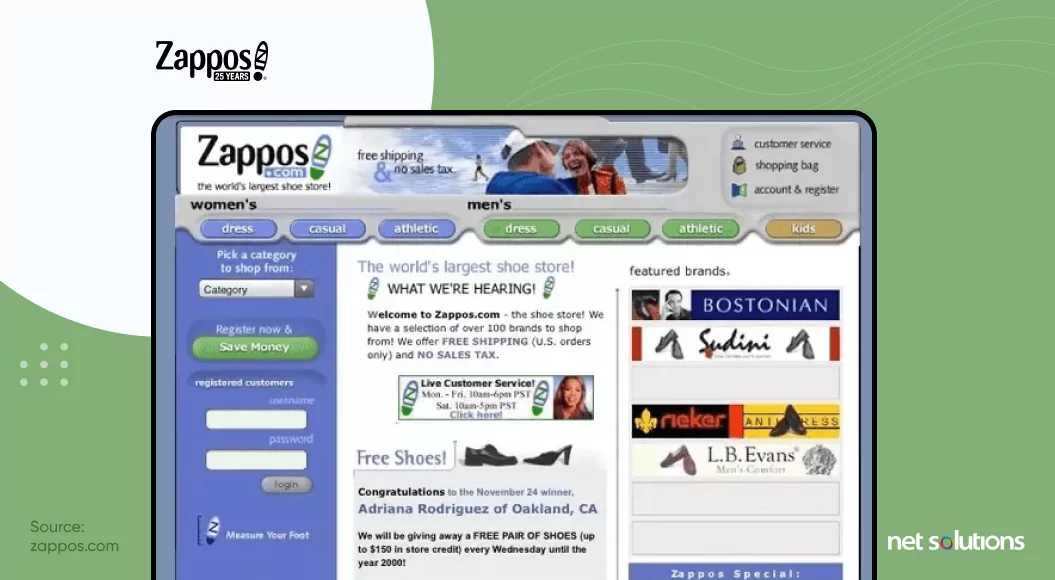
In 1999, Nick Swinmurn believed there was a market for selling shoes online. But first, he had to test his idea.
Rather than building a fully functioning eCommerce store, he registered Shoesite.com and uploaded photos of the shoes he wanted to sell.
Whenever a customer placed an order, Nick bought the shoes from a conventional store and shipped them—an example of a Wizard of Oz MVP at work.
Ultimately, Shoesite.com became Zappos, and Amazon bought it for $1.2 billion in 2009. That’s an incredible achievement for a company that started with zero inventory, no?
- Uber
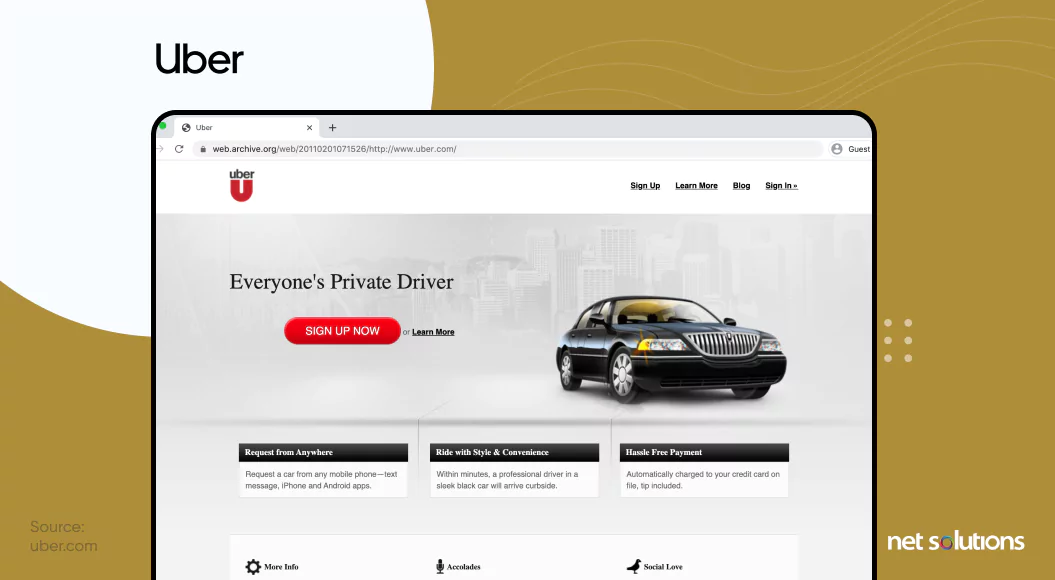
Garret Camp and Travis Kalanick had the idea to pair drivers with people who wanted to order rides on their smartphones.
Rather than engaging in full-fledged mobile app development from the start, they began with a relatively simple MVP called UberCab. It only worked on iPhones or via SMS and was only available in San Francisco and New York—by invitation only! Someone placed the order and a human on the other end dispatched the cab.
This was enough to prove that the idea had legs, and today Uber is known worldwide as the world’s most lucrative and ubiquitous ride-hailing service.
- Buffer
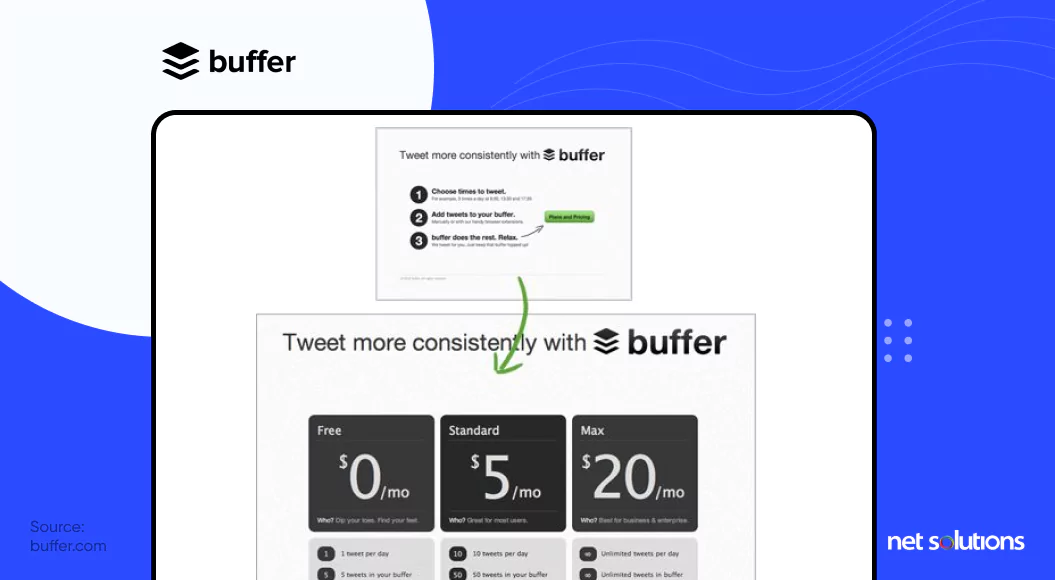
Buffer is a software product that allows people to schedule social media posts, but its MVP consisted of a series of landing pages. The first landing page asked users to submit their email if they wanted to know about the plans and product pricing.
On the second landing page, they asked users if they wanted to try a free version or one of two paid options. Surprisingly, most people were willing to opt for paid plans, and Buffer knew their product had potential. Today, it’s one of the most reliable platforms for planning and scheduling social media posts across different platforms.
“The aim of this two-page MVP was to check whether people would even consider using the app. I simply tweeted the link and asked people what they thought of the idea. After a few people used it to give me their email and I got some useful feedback via email and Twitter, I considered it ‘validated.’ In the words of Eric Ries, I had my first ‘validated learning’ about customers. It was time to gain a little more validated learning [with more landing pages].”
Joel Gascoigne, Founder of Buffer
- Spotify
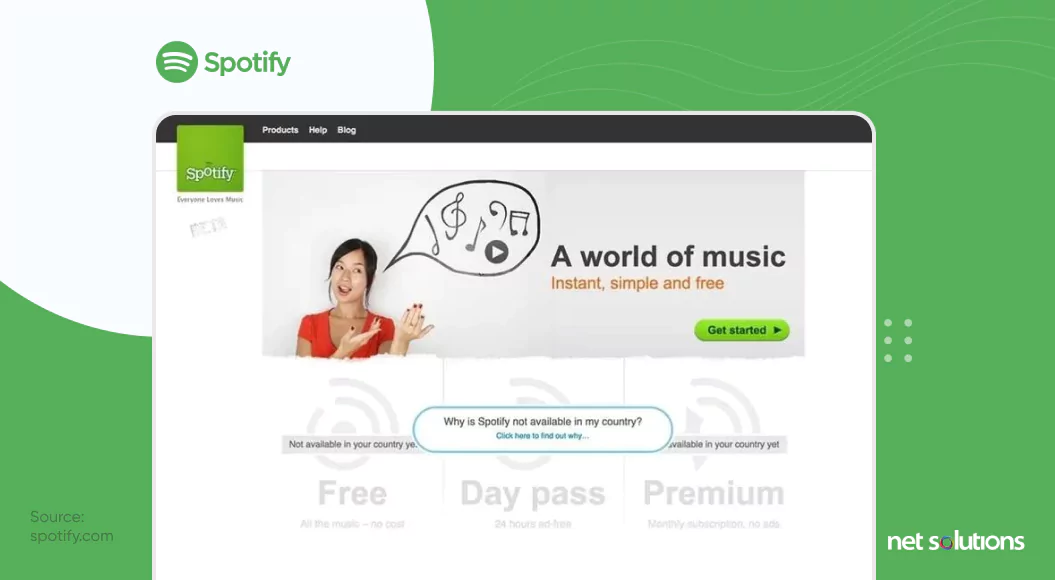
In 2006, no one was willing to pay to stream music as they could easily access it on websites like Napster and LimeWire for free. Then Daniel Ek and Martin Lorentzon had the radical idea of creating a free music streaming service and using ads to generate revenue.
First, however, they had to test their idea because many other music streaming startups launched and quickly failed. Others, like Pandora, proved successful—but with a very different business model. Pandora was a radio streaming service, where users could not choose the songs they wanted to hear.
Ek and Lorentzon created an MVP in the form of a desktop app that offered only one core feature: Music streaming. Later, they added the option for customers to pay a monthly fee for an ad-free experience. As they realized the idea had potential, they started enhancing it further. Today, Spotify has a market value of $18.7 billion.
- Airbnb
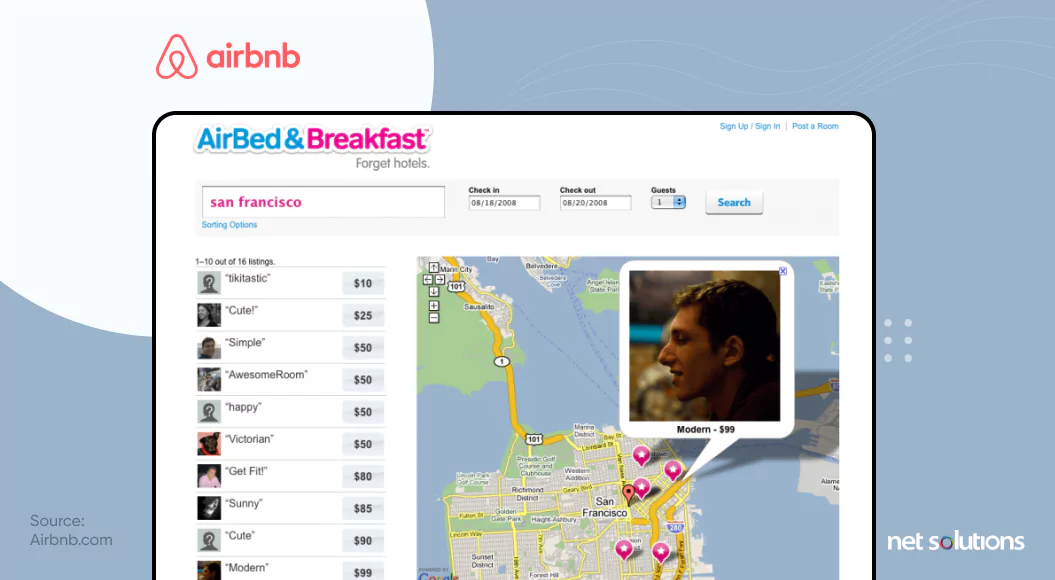
In 2008, Brian Chesky and Joe Gebbia were struggling to pay rent for their San Francisco apartment. They wondered if there was a market for people who wanted to rent rooms (or a sofa) in their homes, which sounded like a crazy idea at the time.
In fact, the idea sounded so crazy that one potential investor told them: “I hope that’s not the only thing you’re working on.” Another venture capitalist walked out of a cafe when meeting with Chesky, who was offering him 10% of the company for just $100,000! Today, Airbnb is valued at over $100 billion.
To test their value proposition, the founders created a simple MVP that consisted of a basic website showing photos of apartments in San Francisco. Conference attendees ran with it and rented rooms from strangers.
Air Bed and Breakfast became a reality shortly thereafter, and the founders shortened the name to Airbnb. Early adopters flocked to the site, it gained plenty of media coverage, and the founders continued to add new features that addressed key pain points in the market.
- AngelList
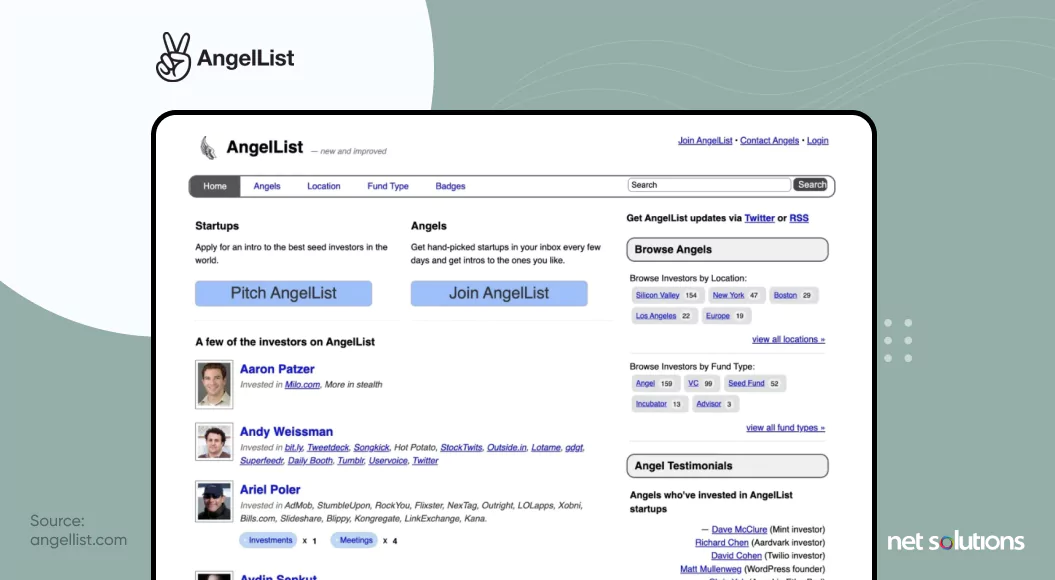
Today, AngelList is a platform that connects startup founders with angel investors and venture capitalists. In the beginning, it faced a common challenge that many new social networks face. Given that it required a user base that didn’t yet exist, how could the founders connect users with one another?
Well, the team of founders had been working in tech for a while, and they tapped into their own list of contacts to make connections via email. The execution was small, but it validated the idea and paved the way for AngelList’s ultimate success.
- Facebook
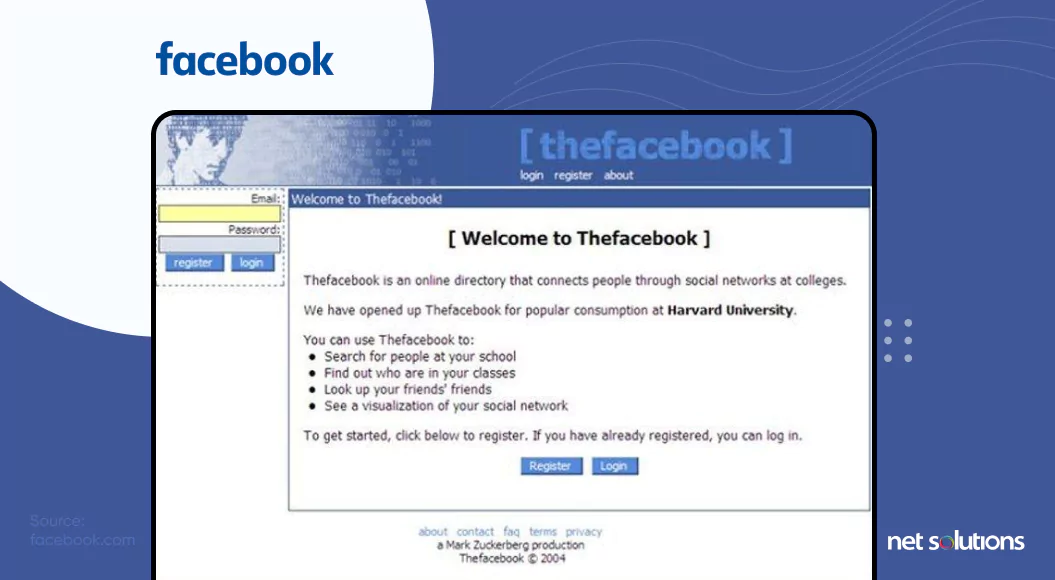
Facebook’s MVP was originally a simple website only designed for Harvard students (Mark Zuckerberg’s peers). Zuck and his roommates found a need within his small community and created it in a matter of days.
Eventually, Facebook began expanding to other universities, but they did so one university at a time in order to gate their usership. This was essential in the days before cloud computing because massive spikes in traffic sunk Friendster (the original social media network) due to limited server capacity.
- Groupon
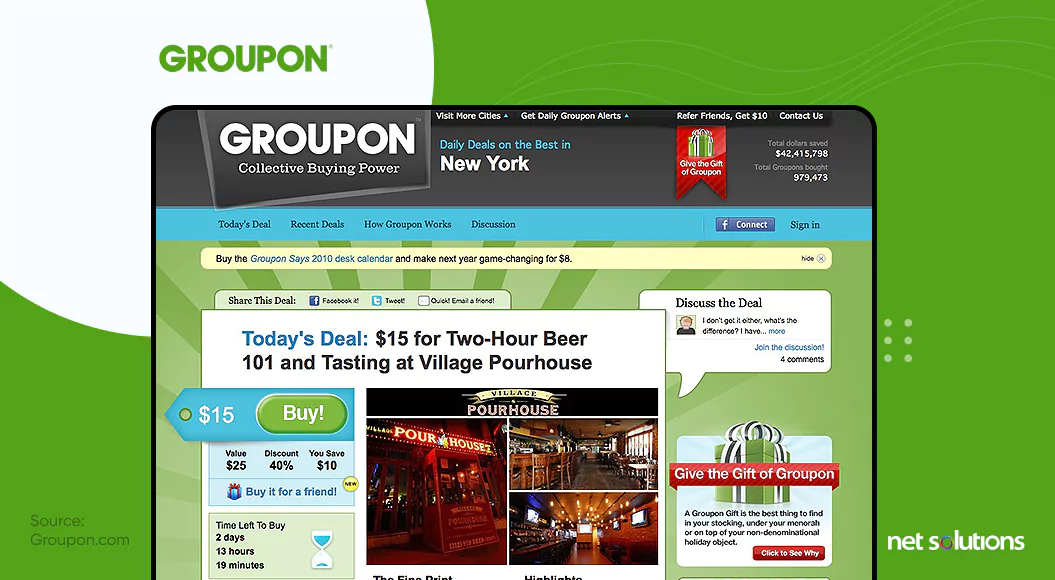
Groupon had a complicated business model from the start. The idea was that if enough people signed up for a deal, then it was activated—encouraging people to forward Groupons to friends.
The ultimate goal was to create a fully automated system because it would be impossible to scale something like this without automation. However, in the beginning, Groupon used a concierge MVP built on WordPress to handle these processes manually via email. This helped the founders to validate the idea.
As they scaled, they created a high-fidelity piecemeal MVP that used a wide array of technologies to support the automated product. This allowed them to further validate the idea, observe user behavior, and gather feedback to create a strong product.
- Dropbox
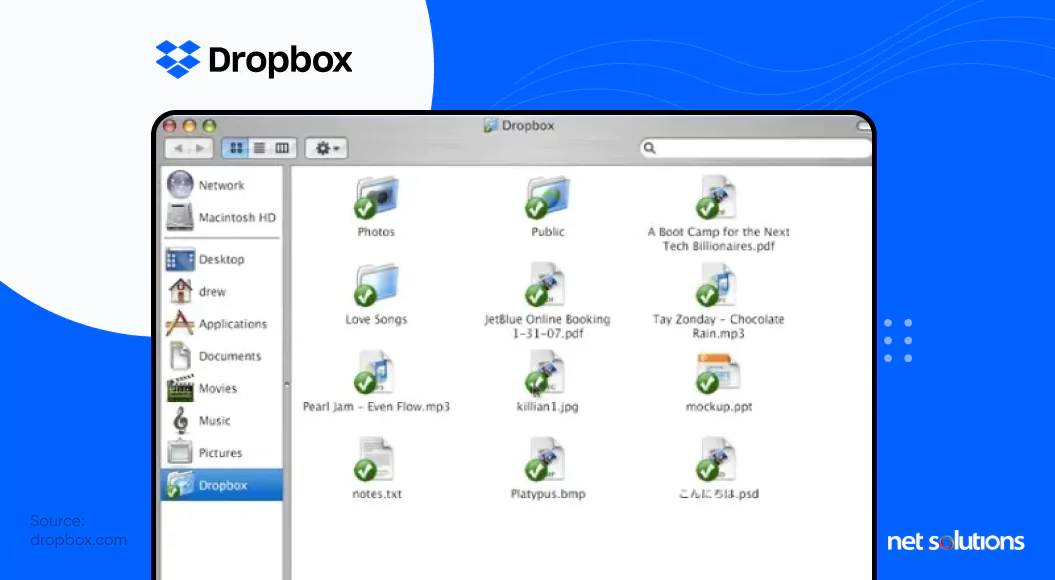
The Dropbox MVP began as an explainer video, as we mentioned above. The reason this worked so well for them is that while enterprises were big consumers of off-sight storage, cloud computing was a relatively new concept, and the B2C and small-to-midsize business markets were largely untapped.
Now, you may be picturing a one-minute explainer video with cartoon graphics and upbeat music, but that’s not what this was. Instead, it was founder Drew Houston talking for four minutes, casually explaining the product and demonstrating how easy it was to use.
The Dropbox MVP is a good reminder that low-fidelity MVPs don’t need to be mindblowing, with high-production value. As long as they communicate the value you intend to deliver, that can be enough to assess the viability of your product idea.
- Foursquare
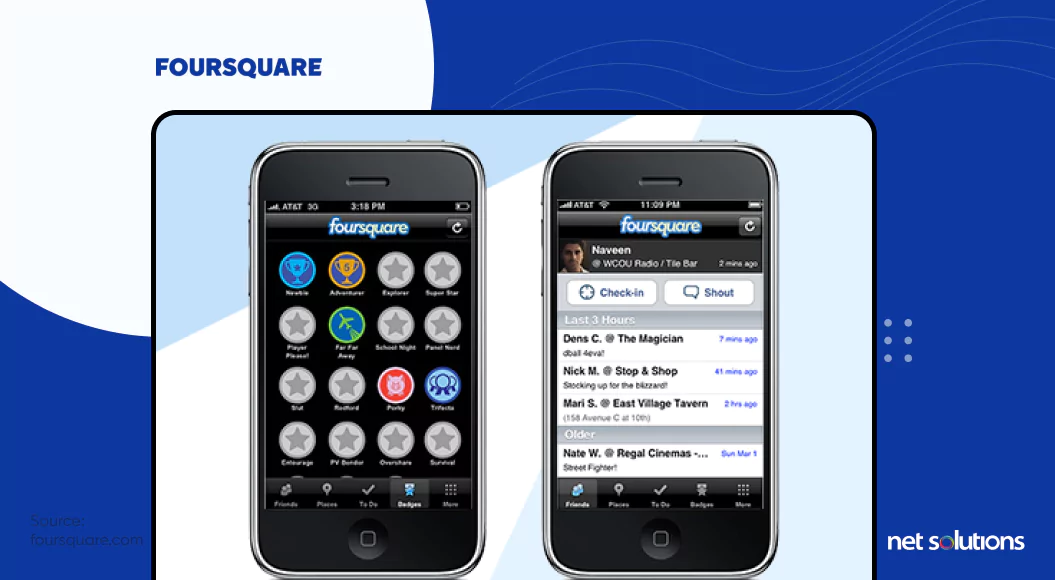
Remember Foursquare? Prior to Facebook and Instagram check-ins, Foursquare was an app that allowed people to check into various locations, with the vision of building a “map of the world.”
Foursquare is still around today and they’re highly successful, but their focus is B2B location services now. None of their success would have been possible, however, without that initial product—which began as a single-feature MVP.
Once they proved there was a market for check-ins, Foursquare began adding badges, naming people the “mayor” of a given location when they had the most check-ins. The gamification caught on, and for a flash in the pan, Foursquare was the latest big thing.
Today, Foursquare works behind the scenes, with companies like Uber, Apple, Coca-Cola, Spotify, Samsung, Nextdoor, and many others relying on them for location services.
How to Build a Minimum Viable Product?
Building an MVP, whether you’re going the low-fidelity route or building a high-fidelity MVP software product, requires thoughtful planning and analysis. The following five steps offer a broad summary of how to build an MVP.
- Step 1: Identify a problem you want to solve: Find a problem that current solutions on the market fail to address—something that people might pay money to solve.
- Step 2: Prioritize features and your MVP scope: Become crystal clear about your MVP concept and its functionality, and don’t let your scope expand too far. The point behind building an MVP is its laser focus, and quick time to market is one of the major benefits.
- Step 3: Choose your technologies: The technologies you use will depend on the type of MVP you plan to build, along with your budget and overall aims.
For example, a single-feature MVP will require product design technology, while a landing page MVP simply requires a landing page maker and tools to gather feedback and observe the behavior of real users. Visit our post about 19 helpful MVP tools to learn more.
- Step 4: Launch your MVP: Launching your MVP will require marketing campaigns of some sort, although we’re not talking about the massive fanfare associated with an official launch. A soft launch may consist of some social media posts or a bit of highly targeted advertising to attract that first round of users who will provide customer feedback.
- Step 5: Evaluate feedback and user behavior: Based on the feedback and behavior of your initial band of users interacting with the first version of your product, you’ll begin iterating, designing, and building new features, along with testing those changes to see what sticks.
Visit our post on how to build an MVP for more in-depth information. We’ve written at length about MVP product strategies and the overall MVP methodology as well.
What Are The Benefits of Minimum Viable Products?
The MVP approach comes with quite a few benefits. Here are a handful of them.
- Validate ideas early: Nothing is worse than spending money and countless hours on design and software development, only to discover that nobody wants what you’re selling. An MVP ensures that the final product is worth building. And if it’s not? You’ll learn that quickly so you can pivot to a more lucrative idea.
- Cost savings: The MVP model is a cost-effective one because it means you won’t spend all sorts of money building features that users don’t require, only to scrap them down the road.
- Faster time to market: The development process is lengthy for a full-fledged software product, but you can launch an MVP and introduce it to the market much faster. If the feedback is largely positive, you can turn your successful Minimum Viable Product into an influential software product incrementally.
- User-centered development: MVPs are designed to understand user needs, and feedback will help you improve the design, functionality, and User Experience (UX) so your customers ultimately love what you have to offer.
Check out our post about MVP benefits for a more in-depth discussion of all the reasons startups and enterprises adopt an MVP approach.
Should You Outsource the Creation of Your MVP?
Simple, low-fidelity MVPs don’t require software development skills—but they do require user research, business analysis, and other knowledge. High-fidelity MVPs require a basic User Interface (UI) and thoughtful User Experience (UX) design, along with a seamlessly functional backend. A full-service outsourcing partner can help you with all of this and more.
Many startups opt to outsource all or part of their MVP creation because, in the early stages, founders and their teams are more focused on strategy, building relationships, seeking funding, and other business activities. Besides, many startups don’t have a development team from the get-go.
Meanwhile, mid-size companies and enterprises often turn to outsourcing partners so their IT staff can focus on their day-to-day tasks that keep the business afloat.
Looking for an MVP Development Partner?
Net Solutions has been developing software for startups and enterprises for nearly 25 years, and MVP development is one of our specialties. We can help you at every stage, from user research and ideation to design, development, and launch.
We’ve worked with major organizations like the Harvard Business Review, IMG, and Xerox, along with successful startups like Edplace and Soaq.
Frequently Asked Questions
1. How much should an MVP cost?
MVP pricing can vary considerably based on what you’re hoping to accomplish. A low-fidelity MVP with little user research upfront could be created by a developer working in their living room in one afternoon and amount to the cost of a landing page builder. On the other hand, an enterprise MVP could cost over $100,000.
If you’d like to see a breakdown and rough estimate for different types of MVPs, take a look at our post covering MVP costs. Or better yet, talk to one of our experts to get an informed estimate of your costs.
2. How to test an MVP?
Testing an MVP to validate your product idea requires gathering user feedback and observing user behavior.
Low-fidelity MVPs can gather feedback through forms on a landing page or emails, while high-fidelity MVPs can use tools like Hotjar or CrazyEgg to gather customer input in the form of surveys and on-page feedback forms. You can use tools like AB Tasty to test user behavior as well.
3. What is the difference between MVP and BPV?
A Billable Viable Product (BPV) is similar to an MVP except that companies actually charge for the product. This provides greater validation than an MVP because you know, with certainty, that users are willing to pay for it. It also allows you to develop a coherent pricing strategy that is informed by actual user behavior.
4. What is a Minimum Viable Product in SAFe?
The MVP approach fits well into a Scaled Agile Framework (SAFe) since iteration and flexibility are so key to the Agile methodology as a whole. In SAFe, the epic hypothesis is the name given to the solution you intend to introduce to the market with a given product or feature. In this framework, the MVP is used to prove or disprove the epic hypothesis.
SHARE THIS POST
Table of Contents
Related Resources
- What Is an MVP App? A Guide to Building Successful Products
- A Deep Dive Into 7 Minimum Viable Product Benefits
- A Step-by-Step Guide to Build a Minimum Viable Product (MVP)
- 19-Step Minimum Viable Product (MVP) Checklist [With PDF]
- How Much Does a Minimum Viable Product (MVP) Cost? Here’s the Answer
- 10 Top MVP Development Companies [Great for Startups]
- The Ultimate Guide to Developing an MVP in Agile: What, How, and Why
- A Step-by-Step Guide on how to Master Your MVP Launch in 2025
- How to Prioritize Features for Your Minimum Viable Product (MVP)
- How to Test an MVP: 15 Proven Strategies that Work
- 20 Great MVP Tools to Help You Create & Launch Your Product
- 11 different Types of MVPs to Kickstart Your Software Project
- How to Nail MVP Design with UX Design Principles that Work
- MVP Website: Benefits, Best Practices, How to Build & More


